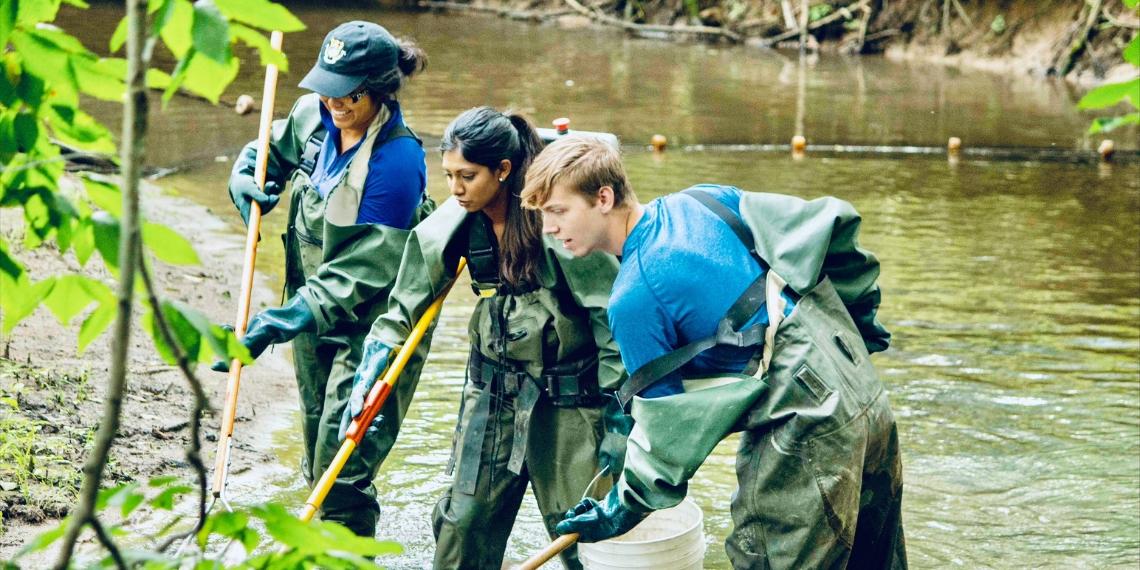What Drives Fish Health in Streams Near Farmlands? Fish Brains May Hold a Clue

Intensive farming is often blamed for harming nearby streams and fish populations — altering stream shape, stripping away streamside vegetation, and increasing runoff, all of which can compromise fish health.
However, recent findings researchers in the Department of Integrative Biology suggests that the story is more complex. The study was led by Dr. Fred Laberge and Dr. Nick Bernier and their former PhD student, Dr. Pria Mahabir.
The team brought a unique angle to their study: fish brains.
“Fish and amphibians are interesting because they grow their brains throughout life,” explains Laberge. “We believe that this could make brain size a useful biomarker of overall fish health.”
To investigate the link between agricultural activity and brain growth in fish, the researchers examined the brain size of creek chub, a large and resilient minnow commonly found in streams of southern Ontario. Creek chubs are omnivores, consuming both plants and other animals, giving them a vital role in maintaining food web stability in streams.
“We know that pollution can stunt brain growth in fish. But is that the case in southern Ontario, where there's a lot of agricultural activity?” says Laberge.
An earlier finding in the project also influenced their choice to focus on brain size.
“We have found that a larger brain relative to body size is also associated with foraging at a higher position in food webs,” says Laberge. “So, if brain growth is reduced, that means their ability to forage higher in the food web may be affected, too.”
Over two summers, the team measured the brain size of nearly 500 creek chubs collected from 14 different sites across five watersheds in Southern Ontario. The level of agricultural activity at each site was determined using indicators such as land use and pesticide levels.
Surprisingly, they found no link between these direct measurements of agricultural activity and the creek chub's brain size.
Notes Laberge, “Even at sites with intensive agriculture and detectable pesticides, the levels are low enough that they don't lead to major harmful effects on the brain of creek chub.”
Still looking to explain differences in relative brain size, the team kept digging. They next examined environmental factors like water temperature and quality, and the abundance of insect prey. Unlike agricultural activity, these factors were more closely associated with the creek chub's brain size.
According to Laberge, fish in the wild may be exposed to a complex “cocktail” of chemical pollutants and environmental stressors that can impact fish health.
“Environmental factors can also affect the variables you're studying, like brain size. Here, we saw that temperature and the type of prey in the stream may have a greater impact on brain growth than the low levels of pesticides,” he explains.
The results highlight the need to test a broad range of environmental factors when studying the effects of pollution. Conventional toxicology studies based on lab testing may not provide the full picture, says Laberge.
“If you design lab experiments that disregard what is happening in the field, you may reach conclusions that are not valid or are biased. Combining field investigation with lab studies, even though it's a lot more work, can be beneficial.”
The study, published in the journal Environmental Biology of Fishes, will guide conservation efforts for aquatic ecosystems and help effectively manage and reduce the risks of agricultural activities on freshwater habitats.
The team's next goal is to gain a deeper understanding of how environmental and ecological factors affect brain growth.
“We're really interested in the relationship between environmental temperature and fish brain size, as our finding of a positive connection between brain size and average summer temperature in this study is puzzling.”
Stay tuned for more breaking news on the role of fish brains in environmental research.
This research was funded by the Natural Sciences and Engineering Research Council of Canada through the Canada First Research Excellence Fund, Food from Thought, and Discovery Grant programs.
Read the full study in the journal Environmental Biology of Fishes.
Read about other CBS Research Highlights.